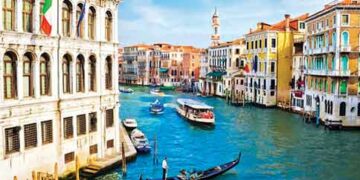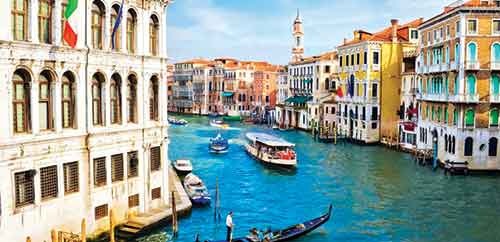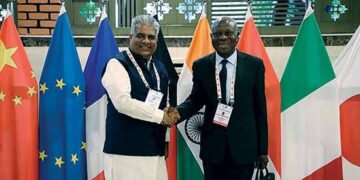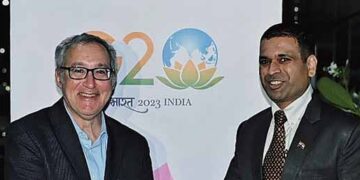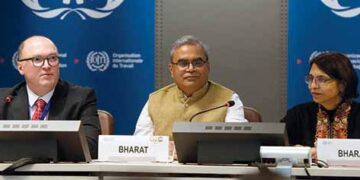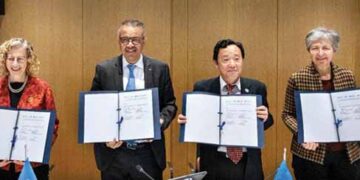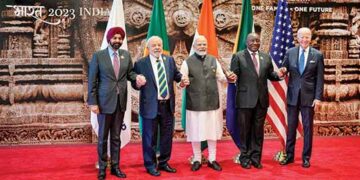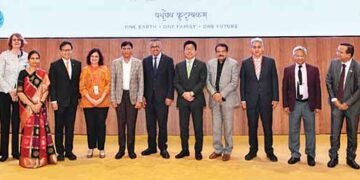INDIA and Italy, two ancient civilisations with rich cultural heritage, share an extraordinary history of interaction and trade spanning over 2000 years.
In this historic relationship, Italian port cities served as vital trading posts along the renowned spice route. The adventurous Venetian merchant Marco Polo embarked on a remarkable journey to the East, including India, in the 13th century, documenting his awe-inspiring experiences.
In the present era, India and Italy continue to build upon their historical ties through a robust political relationship that dates back to 1947.
Demonstrating their commitment to strengthening bilateral cooperation, both nations have engaged in a steady flow of high-level visits and official engagements, resulting in the signing of significant agreements.
Spate of bilateral visits Prime Ministerial visits and meetings between key ministers, including External Affairs Ministers, Commerce Ministers, Agriculture Ministers, and Health Ministers, have played a crucial role in fostering personal connections and facilitating the establishment of numerous Memoranda of Understanding (MoUs) between the two countries.
India’s leaders have underlined the importance of this bilateral relationship through historic visits to Italy. Noteworthy prime ministerial visits from India have included Jawaharlal Nehru’s trips in 1953 and 1955; Indira Gandhi’s visit in November 1981; HD Deve Gowda in November 1996; IK Gujral in September 1997; AB Vajpayee in June 2000; Manmohan Singh in July 2009, and most recently, Prime Minister Narendra Modi’s participation in the G20 Leaders Summit held in Rome in October 2021. The then President Shanker Dayal Sharma had also visited Italy in October 1996.
Italy, recognising the significance of this bilateral relationship, has reciprocated these visits with a strong show of commitment from its side.
Italian Prime Ministers who have visited India include Giovanni Goria who embarked on the first official visit by an Italian Head of State or Government, to India in 1988; Romano Prodi in January 1998 and February 2007; Paolo Gentiloni in October 2017, and Giuseppe Conte in October 2018.
Italy’s Prime Minister Giorgia Meloni visited India in March this year. Among Italian Presidents who have visited India include Oscar Luigi Scalfaro in February 1995; and Carlo Azeglio Ciampi in February 2005.
Formal consultations
To further solidify their ties, India and Italy regularly engage in institutionalised Senior Officials Dialogues, known as the Foreign Office Consultations. The most recent consultation, held in Rome on February 14, 2022, provided a valuable platform for officials to engage in comprehensive discussions on enhancing bilateral relations across various domains.
The Indian community in Italy, estimated at 180,000 individuals, including People of Indian Origin (PIOs), stands as the third largest Indian community in Europe, following the United Kingdom and the Netherlands.
Official Italian data from January 2019 shows that approximately 162,000 legal Indian migrants reside in the country. Remarkably, these individuals account for 4.4 per cent of non-European Union citizens in Italy, solidifying their position as the fifth largest foreign community.
Diaspora deeds
As first-generation migrants, the majority of the Indian community in Italy actively contribute to crucial economic sectors such as agriculture, dairy farming, the leather industry, construction, and the service industry. Their contributions not only strengthen the Italian economy but also preserve their cultural heritage while integrating into their new home.
Recognising the significance of this community, the Indian Embassy in Italy actively engages with them through vibrant celebrations like Prakash Parab and Baisakhi, fostering a sense of belonging and cultural exchange.
The deep-rooted historical ties, dynamic diplomatic exchanges, and the flourishing Indian community in Italy all contribute to the strong and multifaceted relationship between these two nations. As India and Italy continue to collaborate across various sectors, their shared commitment to nurturing this bond promises a prosperous future filled with mutual growth and cultural enrichment.
